Commentary on the new Toyota Aqua model - All about the compact HV with 40km/L
ReportOctober 31, 2021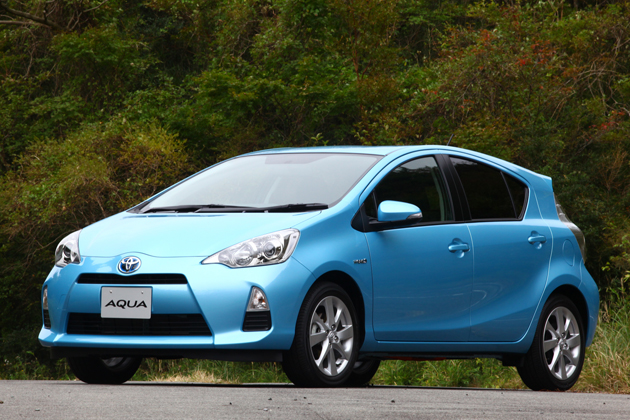
Easy-to-use and fun hybrid
Toyota's new compact car, which had already been talked about as a "Vitz-class hybrid car with excellent fuel efficiency," went on sale as "Aqua" on December 26, 2011.
It is a compact car with an overall length of 3995mm, less than 4m, and an overall width of 1695mm, which is well within the 5-number size limit. It is literally an affordable hybrid vehicle. With the world's best fuel efficiency, easy-to-use and fun hybrid, spacious interior in a compact body, and affordable price, it is a car that sets a new standard for compact cars.
The exterior design is crisp and finished to give a sense of tightness. Compact cars tend to be designed to look cute, but Toyota Aqua is not necessarily aimed only at female users, so it expresses a different kind of personality. The low overall height and gently sloping roofline are designed to be aerodynamic, but even with the low overall height, the interior space is spacious enough to be considered a compact car.
The interior is designed with a thin instrument panel that extends to the left and right to make the interior appear larger, and the space between the instrument panel and the center console and door trim creates a sense of spaciousness.
The optional TFT multi-information display shows a variety of information such as instantaneous fuel consumption and average fuel consumption. The same type of steering wheel as the Prius with a touch tracer display controller is available as an optional feature.
The basic platform is based on the Vitz, but the wheelbase is the same as that of the sedan-bodied Verta, which is slightly longer than the Vitz. As a result, there is more room in the front and rear seats and luggage space. Plenty of storage space is available throughout the cabin, which is the promise of today's compact cars.
The Aqua is available in ten body colors and four interior colors, depending on the grade, with the S available in either fresh green or cool blue.
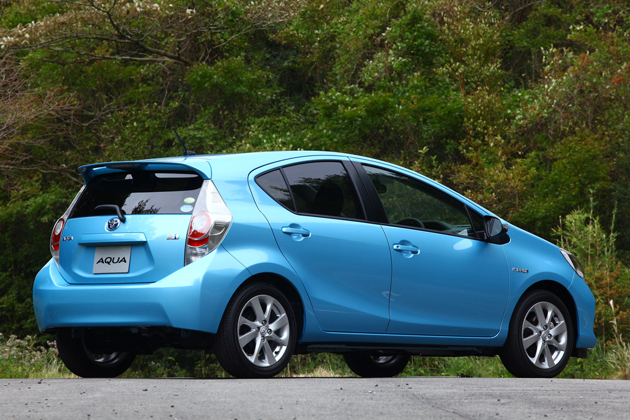
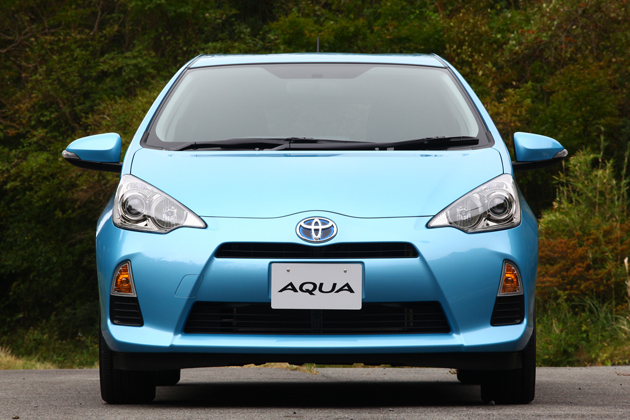
Toyota's unique hybrid system
The hybrid system is Toyota's unique THS-II. Even though it is a compact car, the two-motor system ensures excellent fuel efficiency. The engine is a 1.5-liter Atkinson-cycle 1NZ-FXE, and the hybrid system, which combines this engine with an electric motor, is basically an adaptation of the old Prius. Of course, the various components and controls of the hybrid system are substantially new.
The batteries are nickel-metal hydride, but they have been made smaller and lighter, as have the inverters that convert the current and the converters that change the voltage. In addition, a newly designed motor has been adopted. The engine, which produces a maximum output of 54 kW and a maximum torque of 111 Nm, is combined with an electric motor that produces a maximum output of 45 kW and a maximum torque of 169 Nm. in the JC08 fuel economy mode and 40.0km/L in the 10-15 mode. ECO drive mode and EV drive mode are available as driving modes, allowing the driver to choose to prioritize fuel efficiency or run on the motor alone, depending on the situation and preference.
Three grade variations
The Toyota Aqua comes in three grades: L, S, and G. These are the same as the Prius. However, the Touring Selection, available on the Prius, is not available on the Aqua. (The Touring Package is available as an option).The L model is priced at 1.69 million yen, which is quite cheap for a two-motor hybrid vehicle, but it is poorly equipped as expected. The rear seats are not equipped with power windows, but rather with manual regulators, making it difficult for the average user to choose this car.
Nevertheless, all models are equipped with a rear roof spoiler, front door green glass with UV cut function, VSC, TRC, hill start assist, electronic braking system, and automatic air conditioning as standard equipment, so a certain level of demand may be expected for rental cars and business use.All grades of Aqua share the same JC08 mode fuel economy, but the S and G grades achieve 37.0km/L in the 10-15 mode, while only the L grade achieves 40.0km/L. Since it weighs less, it can be seen as a fuel efficiency special that omits equipment and soundproofing materials.
S or G for the average user
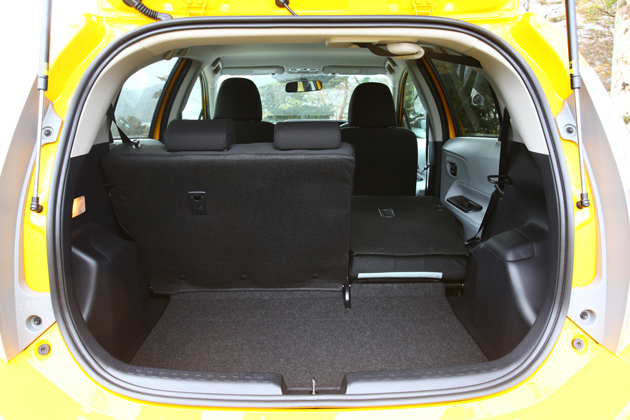
The middle grade, S, is priced at 1.79 million yen, 100,000 yen more than the price of a new car, but it also comes with better equipment. Naturally, power windows are also standard on the rear doors.
The L and S grades also come with 15-inch tires instead of 14-inch, intermittent rear wipers linked to the windshield washer, seat up/down adjusters, a telescopic steering wheel, interior decorations, a tonneau cover, and many other features. And that's not all. The Smart Entry Package (described below) and other package options are not available for the L model, but only for the S and G models.
In this sense, the average user should buy the S grade or higher. Even if you choose the top-of-the-line G grade, there is not much difference in equipment between it and the S grade. The price is only 1,850,000 yen, 60,000 yen more than the S, so it is only natural that there is little difference in equipment.
What is added from the S to the G is a leather-wrapped steering wheel, a center console box with armrest, and interior decorations. The leather-wrapped steering wheel is the key, so for the 60,000 yen difference, the G is the better choice. Available options for each grade include SRS side and curtain airbags and a cold weather version. For the L grade, tonneau covers and assist grips are also available as options.
A variety of options available
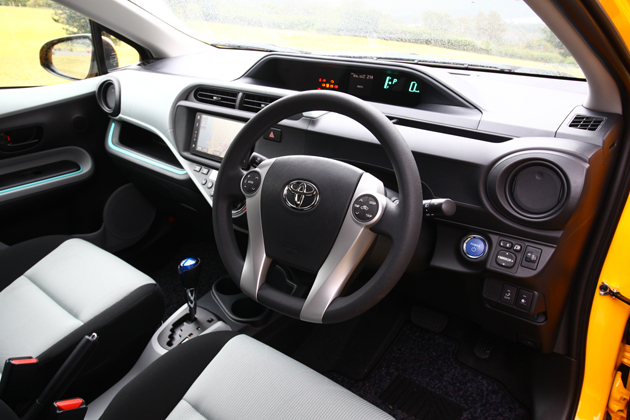
Seven different package options are available for the Aqua. These include Smart Entry, LED headlamps, Touring, Beauty, NaviReady, Advanced Display, and Audio package options, which add up to over 400,000 yen if all seven options are installed. Moreover, since the car navigation system is not included in this package, the total amount of options exceeds 500,000 yen even if you choose the simple type.
So, you have to think carefully and carefully select what you really need. The Smart Entry Package costs 53,550 yen, including the Konlight (auto lights), so I would like to install this package. On the other hand, the LED headlamp package costs 115,550 yen, including fog lamps, so you may want to pass on this one.
The Touring Package, which includes 16-inch tires, special suspension, and a large rear roof spoiler, costs 110,250 yen, and this is an option to be selected based on preference. The Beauty Package, which includes nanoe and super UV-cut glass, costs 43,050 yen. This is recommended for female customers.
The NaviReady Package, which includes a rearview camera and a car navigation system, is relatively inexpensive at 42,000 yen and should be installed for safety reasons.
The Advanced Display Package is a combination of a TFT display and a touch-tracer display. This package is also 42,000 yen, but it's a bit more difficult to decide whether to install it or not. The audio package costs 46,200 yen. Since the base model is audio-less, it is impossible not to install some kind of audio system, so it is likely that this package will be installed.
Note that the price of the package options may vary depending on the combination. It is best to check with the salesman.
Buy now!
TCV Corporation has the partnership with MOTA.
Copyrights ©2021 MOTA, All Rights Reserved.
Translated by TCV, MOTA liability, trademark, images and documents use rules apply for the original and the translation.
Reproduction and distribution of this article including images without written permission is prohibited.
This article was published in the past, and the grade status may differ from that of the exported / imported vehicle.
In case of Copyright infringement , a criminal investigation may be initiated to whether it's individual or a company.


